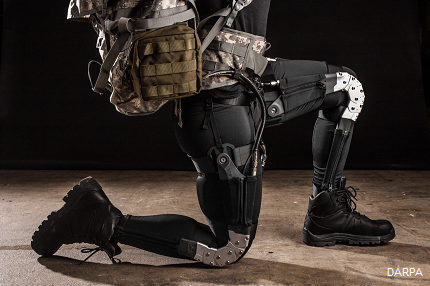US special forces a step closer to 'Iron Man suit'
Special Operations Command awards a Phase 2 contract for development of a flexible, bulletproof exoskeleton.

U.S. Special Operations Command is moving on to Phase 2 in the development of its “Iron Man” exoskeleton that would give Special Forces troops head-to-toe bulletproof protection while allowing for fluid movements.
Socom has issued a grant to Ekso Bionics, a robotic exoskeleton company and one of the companies that worked on the first phase, to continue its work under the Tactical Assault Light Operator Suit, or TALOS, project, according to an announcement from the company. With this latest award, Ekso will now have garnered $35 million in contracts in the four-phase project, the company said. Its Phase 2 work is expected to be completed later this year.
Three unpowered prototypes of the suit were demonstrated last June, and the first fully operational suits are expected by August 2018.
Ekso is working on the exoskeleton part of TALOS, developing a strong, light suit that allows a full range of motion. But TALOS project has a lot of other elements to it, including the ability to monitor vital signs, deliver battlefield information in real time, and help troops carry their loads to avoid physical stress and power the suit with relatively lightweight batteries. Down the road, the project also could produce even more futuristic technologies, such as fabrics that can stop bleeding, enhanced visuals and sensors, and, in a shift from “Iron Man” to “The Terminator,” liquid armor.
Adm. Michael McRaven, who leads Socom, has been pushing for TALOS, for which he skipped the usual prime-contractor approach and instead devised a large collaboration involving government, industry and academia. In all, some 10 national laboratories (such as Sandia, Los Alamos and Lawrence Livermore), 13 universities, 16 government agencies (including the Defense Advanced Research Projects Agency) and 56 companies are available to contribute to the project.
Ekso is working with Stanford University's state-of-the-art simulation software network, called OpenSim, and the Robotics Program at SRI International on its part of the project.
The collaborative design of the project allows organizations to contribute and/or adapt technologies they’ve developed for other uses. Ekso, for instance, has made exoskeletons, or wearable robots, for a variety of medical, industrial, military and other uses.
DARPA, meanwhile, is developing a Soft Exosuit with the type of technology that potentially could be used inside the TALOS exoskeleton. The exosuit, being developed for DARPA by Harvard University’s Wyss Institute, is designed to be worn under clothing and includes lightweight robotics to assist the leg muscles and joints when in motion. In fact, researchers have said it could even provide enough of a performance boost to allow its wearer to run a four-minute mile.
As with other forward-looking projects, TALOS also could produce technologies for use in a lot of other areas, such as partial exoskeletons to support soldiers’ knees or backs, flexible bulletproof and a number of nanotechnolgies.